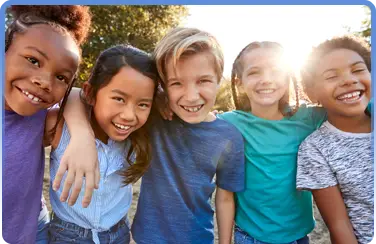What are ACEs used for within Child Trauma treatment?

Adverse Childhood Experiences (ACEs) measure the trauma children face from abuse, neglect, or household dysfunction. Foster youth often have high ACE scores, putting them at greater risk for mental health struggles, physical illness, and behavioral challenges. Foster parents play a crucial role by practicing trauma-informed care, building protective factors such as safety and nurturing relationships, and fostering resilience. With the proper training and community support, children can heal, grow, and thrive despite difficult beginnings.
Let's Talk About ACEs
Through this collaboration, prevention services and supports help protect children and produce thriving families. Children placed into foster care have often experienced significant trauma due to abuse or neglect.
One of the most frequently asked questions that prospective and experienced foster parents ask when considering a placement is: What mental and physical trauma/ abuse or traumatic events has the child(ren) experienced in their past?
There is a standard system or method in the foster care system used to assess the effects of traumatic experiences during childhood.
According to Laura Starecheski of National Public Radio (NPR), the Adverse Childhood Experiences (ACE) score is a tally of different types of abuse and neglect by previous family members, as well as other hallmarks of a rough childhood for children in foster care.
According to the Center for Disease Control's (CDC) ACE study, the more traumatic your childhood, the higher your score is likely to be. A higher score also means a higher risk for later physical health conditions, mental health conditions and mental health problems in adulthood.
Starecheski outlines three types of ACEs: Abuse, Neglect, and Household Dysfunction. Abuse is defined as: physical, emotional, and sexual. Neglect is defined as: physical and emotional.
Household Dysfunction is defined as mental illness, incarcerated relative, a mother, being treated violently, sexual abuse (forced sexual acts), and divorce. She further outlines the areas in which ACEs increase Health Risks.
Under behavior: lack of physical activity, smoking, alcoholism, drug use, and missed work. Under Physical and Mental Health: severe obesity, diabetes, depression, suicide attempts, STDs, heart disease, cancer, stroke COPD and broken bones.
You may be asking: what does this have to do with National Child Abuse Prevention Month and preventing child abuse in America? Well, the answer is this: Foster parents need to understand how high ACE scores can impact one's life.
Foster parents should be knowledgeable in Trauma-Informed-Care (TIC). Trauma-informed care can be defined as the open-mindedness and compassion that everyone deserves because anyone can have a history that impacts their encounters with their past.
Child psychologist Hilit Kletter of Stanford University's School of Medicine says that to spot these children, "she looks for visible signs of stress to understand what might have happened to them and how best to intervene.
Some kids may experience forms of PTSD, caused by previous trauma or abusive relationships. People with PTSD is a disorder in which a person has difficulty recovering after experiencing or witnessing a terrifying event. Your foster child may have nightmares or recurring thoughts of a stressful event or may re-enact the trauma through play.
The child may seem distracted or withdrawn. Behaviors will be observed at school Kletter says, "Teachers will tell parents [their child] seems to be in a daze in the classroom, not paying attention." Kletter says, "reactions to trauma are sometimes misdiagnosed as attention deficit hyperactivity disorder symptoms.
Kids dealing with adverse experiences may be impulsive or act out with anger or other strong emotions.
Children with high ACE scores often have difficulty regulating their emotions in the classroom.
Frank Lopez, Clinical Services Director for Upbring, indicates that protective factors such as safety, supportive and nurturing caregivers, meeting basic needs, and access to health care increase children's resilience.
These protective factors allow the child to form secure attachments that help meet developmental milestones, socialization skills, sound decision-making, and improve quality of life. With training, foster parents can provide these protective factors to children under their care.
While trauma can significantly impact a child's well-being, it doesn't have to dictate the rest of their lives. Intervention and trauma-informed care provide a child a chance to heal from wounds of their past and move toward a brighter future.
It takes a community to come together and support these children and youth and help them know that they are worthy of that future.

Learn more about ACEs and trauma-informed care. Contact FosterVA today to see how you can support children in foster care with safety, compassion, and stability.
What are you waiting for? Click here to help a child in need!
